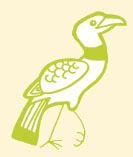
New picture, at last at last. This is a fairly straightforward depiction of Kowloon Walled-City, a place that used to exist as a somewhat autonomous settlement in Kowloon, Hong Kong.
This picture doesn't really generate the gut-wrenching sense of horror I feel when I look at photographs of the real place, but the purpose of the image is mostly to be a decorative accompaniment, not to editorialize. It was actually a possibility for the first book -- one word amongst a sea of other words.
The concept has sort of haunted me about three years now. When I first saw it and started my research I was completely overwhelmed. How can I do a picture of this place? It's too big, it's too complicated, too detailed for the scope of the project. I don't have enough time to do it justice. I don't know how to simplify it or abstract it down without losing the essence of what it is. I tried and tried and finally opted to put it aside for less complicated topics. (That was the beauty of the first book, I had a lot to choose from.)
Honestly a good struggle can be a wonderful thing. Trying to paint something you are unfamiliar with (i.e., doing a lot of research and learning about something new,) -- or even something you might not be naturally drawn too -- is probably the best thing an illustrator can do to grow. Someone was telling me not long ago that one should make a list of the 100 things you "always draw" and to use that list to help you when you come against something hard to draw. Too hard? Refer to your list of familiar methods, approach it in a way you have before. I'm not sure I agree with that. Wouldn't this just get one trapped in an uninteresting pattern? I agree that an artist who can turn a bad idea into a good idea is a true artist. But that is different than just relying on one's habitual approach. I'm pretty sure one's vision and instincts are going to be contrived enough all on their own -- by virtue of being generated by one brain -- without limiting them to a bulleted list. Isn't that all the more reason to approach things you are uncomfortable with?
(My opinions here are being heavily tinted by my recent readings of Pema Chodron's, who encourages people to "lean into the sharp corners" and to "go to the places that scare you", as a method of achieving a more comfortable relationship with these difficult things. And ultimately, achieving a more comfortable relationship with the larger picture.)
And having said all that, it is also good to remember a lesson I got from a biography of Picasso. He said something along the lines of: if you can handle five elements, only paint two. Fully master simpler things before you try and overwhelm yourself with a project that is too complicated for you.
And the truth of the matter was: under the limitations I had during the making of the first book, Kowloon Walled-City was too much for me. Too difficult, too overwhelming. So I took a step back, set it aside, and went for much easier concepts that week. And three years later it was still a struggle, but not an impossible one. And the picture's completion this week was that much more rewarding. It's a weight sliding off my shoulders.
.


